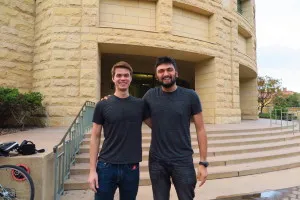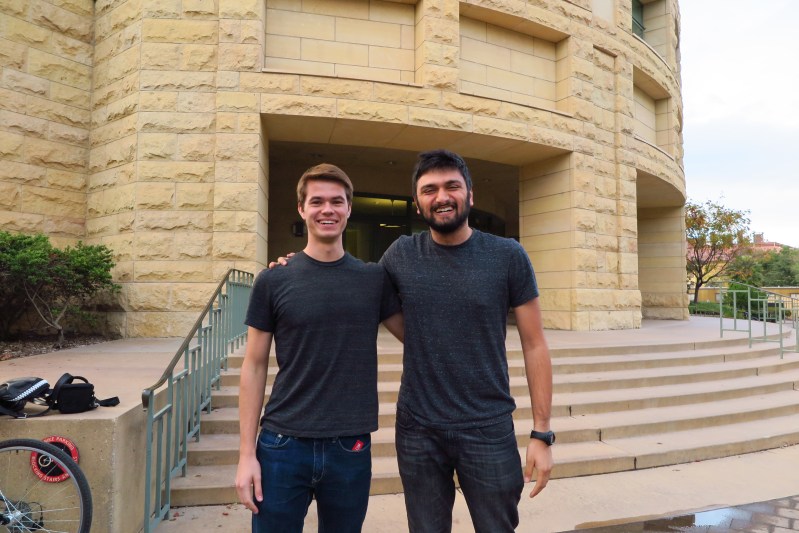
Spurred by a growing student interest in the policy and philosophy of space exploration, next quarter, two juniors will lead a Student Initiated Course (SIC) called AA 47SI: “Why Go to Space?”
The one-unit course will split its time between class discussions and guest lectures from leaders in the field. Rishi Bedi ’17 and Thomas Teisberg ’17, who conceived and designed the course, said that AA47 SI comes at an opportune time, as space exploration gains new momentum after decades of declining government funding and largely unsuccessful private investment.
“We’re really on the verge of a second space age right now,” Teisberg said. “It’s really fascinating to watch how an industry like this gets revitalized.”
“You’ve got this fascinating connection between what people called old space, meaning all these old government contractors in the era of Apollo and so on… and these brand new startups with 20, or 50, or 100 people, with these ambitious ideas,” he added.
Stanford’s Student Initiated Course (SIC) program allows students to work with a faculty advisor to design and teach a class of up to 20 students. Students submit a proposal to be reviewed by a group of faculty members, who ensure that the course is well-planned and worth academic credit, said Vincent Su ’16, who manages SIC applications.
Because SICs are limited in enrollment, interested students must fill out an application, linked on ExploreCourses.
Bedi and Teisberg’s course grew out of their involvement with the Stanford Student Space Initiative (Stanford SSI), a student group founded in 2013 that now has over 100 active members, according to Teisberg, who is also the co-president of the organization.
While the organization is very project-based, Teisberg and Bedi sought last year to incorporate broader discussion about space policy into the group.
“We realized in the process of doing so that none of us in the organization knew a ton about those topics,” Bedi said. “We wanted to start the class … to provide a structure for Stanford students interested in these topics to meet and talk about them and learn from some of the leading people in industry and government and academia.”
Last spring, Bedi and Teisberg began reaching out to a number of experts and were pleased to find many eager to guest lecture for the course. Confident that they could secure the necessary speakers, they worked with faculty advisor Mykel Kochenderfer, an assistant professor of aeronautics and astronautics, to bring the class into being. Alumnus Marshall Bennett M.A. ’10 has also been one of their primary resources in designing the course, Bedi said.
Speakers will represent a wide range of perspectives on space exploration. Confirmed guests include Peter Warden, the former director of NASA’s Ames Research Center; Jeff Greason, the CEO of a company called XCOR Aeropsace that has helped shape much of the government legislation on commercial space tourism; and, on the more esoteric side, Daniel Faber from Deep Space Industries, which aims to one day mine resources from asteroids.
Bedi said that, although he and Teisberg will need to meet with Kochenderfer to learn how to best lead discussions, he believes there are advantages to a student-run classroom.
“In discussion there can be sort of a lower activation energy for students to get involved, because everyone in the room is a student,” Bedi said. He also noted that “we as students have a pretty good gauge on what our peer group is interested in learning.”
“Ninety-nine percent of the time there’s a faculty member who’s teaching a class about what we want to learn,” Bedi added. “But the one percent of the time where there isn’t, it’s really nice that Stanford allows us to cater to that specific academic interest.”
The Department of Aeronautics and Astronautics has taken notice of this interest. Kochenderfer said that he and other faculty have been impressed by growing undergraduate enthusiasm for space studies, citing the success and expansion of the student group SSI.
As a result, the department of Aeronautics and Astronautics — which mainly serves graduate and Ph.D. students — is seriously considering expanding to include an undergraduate program, Kochenderfer said. Currently, undergraduates can pursue an interdisciplinary major in Aeronautics and Astronautics, but the department offers only one specifically undergraduate-level course, the introductory class AA100.
“Having been an undergraduate [here], I care deeply about the opportunities that are given to undergraduates, and the quality of the undergraduates here is unparalleled,” Kochenderfer said. “They come here ready to lead, ready to learn, ready to do awesome things.”
Kochenderfer added that implementing an undergraduate program will likely take a few years, because the department will need to hire more faculty. In the meantime, AA47 SI is one more venue for undergraduates to explore a passion for space.
“I think there’s a huge value to [SIC courses] because the direction of the university should be largely shaped by the interests of the students,” said Kochenderfer.
Contact Hannah Knowles at hknowles ‘at’ stanford.edu.
